|
|
|
|
Russian Heavy Tank KV-2
Reviewed by Brett Green
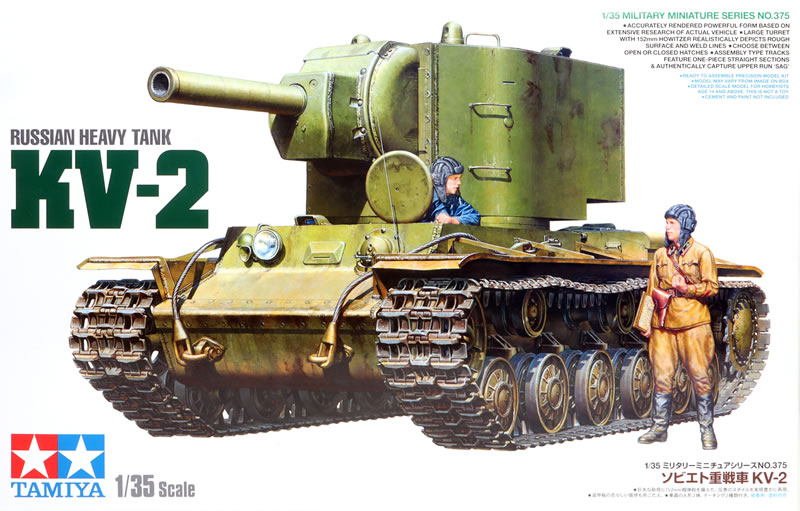
Summary
| Stock Number and Description | Tamiya Kit No. 35375 - Russian Heavy Tank KV-2 |
| Scale: | 1/35 |
| Media and Contents: | 319 parts in dark green plastic; two parts in clear; eight polythene caps; 1 length of string; markings for one vehicle. |
| Price: | 4500 Yen |
| Review Type: | First Look |
| Advantages: | High level of detail; beautiful surface textures; perfect fit; link and length tracks; includes Commander and driver figures. |
| Disadvantages: | Some ejector pin circles. |
| Recommendation: | Once again, Tamiya has delivered a well-detailed and easy to build model of an iconic vehicle. This new model has nothing at all in common with the 1972 release. It features plenty of detail and the surface textures, especially the rolled steel effect and torch cuts, are stunning. This is a worthy and faithful replica of an important WWII Soviet tank. |
Background
During the Winter War, the Soviets found it difficult to deal with the concrete bunkers used by the Finns and a request was made for a tank with a large howitzer.
One of the rush projects to meet the request put the howitzer in a new turret on one of the KV tanks.
Initially known as 'Little turret KV' and 'Big turret KV', the 76-mm-armed tank was redesignated as the KV-1 Heavy Tank and the 152 mm howitzer one as KV-2 Heavy Artillery Tank.
The KV-2 was produced at the same time as the KV-1.
Due to the size of its heavy turret and gun, the KV-2 was slower and had a much higher profile than the KV-1. Few were produced due to its combat ineffectiveness, mainly the decreased speed due to the weight of the new gun and turret.
Due to an increase in turret weight from the expanded dimensions and a heavier gun, the turret traverse mechanism could work only on level ground.
FirstLook
Tamiya released their first 1:35 scale KV-1 kit in 1972. This was followed by a KV-II (sic) in 1975. These were typical kis of their day with motorisation options and full length vinyl tracks.
In 2005, Trumpeter launched their Kliment Voroshilov family with a KV-2, quickly followed by around ten variants of the KV-1/2/85 family, both mainstream and rare. These were some of Trumpeter's best ever kits.
Tamiya’s brand new 1:35 scale KV-2 owes nothing at all to the 1972 release The turret parts are completely new while the tracks and running gear are based on the excellent 2020 KV-1 release.
Tamiya's 1/35 scale KV-2, kit no. 35375, comprises 319 parts in dark green plastic, two parts in clear, a length of string, eight polythene caps and markings for a single vehicle.
The new sprue contains parts for the turret, revised engine decal details and two crew figures.
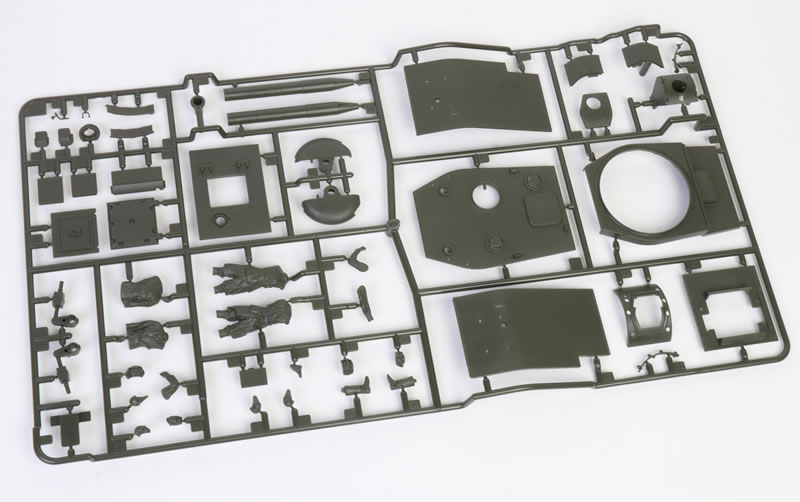
Surface textures ae very impressive. I especially liked the pitted and irregular rolled armour plate effect on the turret parts, the cast texture on the mantlet and the crisp torch cuts on the edges of armour plates.
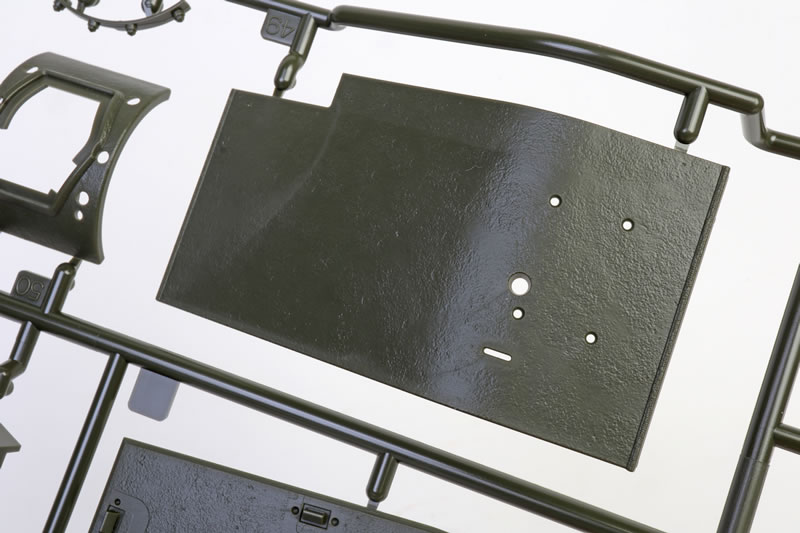
Moulding marks or ejector pin circles are mostly located where they cannot be seen on the finished model. The main exception is three recessed circles on the inside of the hatches, which will be visible if they are posed open.
The lower hull is broken down into the two sides, floor, middle bulkhead and curved rear plate. .
The hull top features separate driver's and engine hatches that may be posed open if you wish. The forward hull is also made up of individual plates.
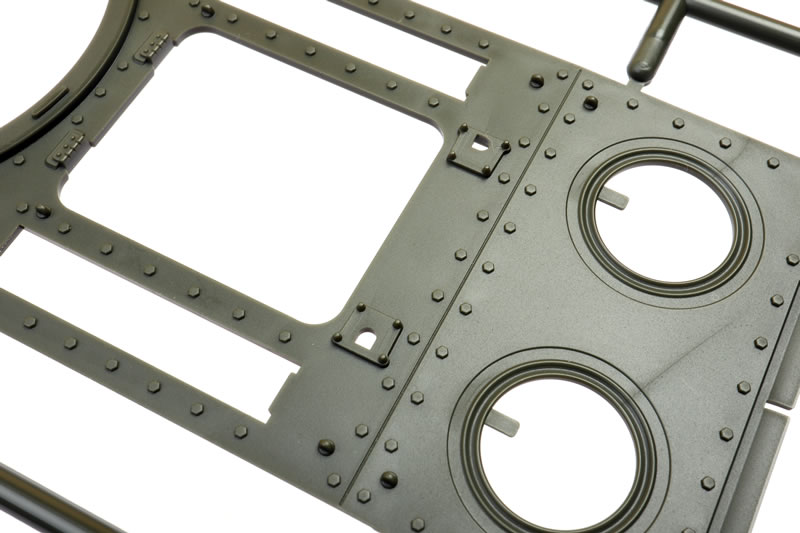
The engine deck mesh is moulded from solid plastic but looks pretty good. I think they will be quite convincing after painting and weathering.
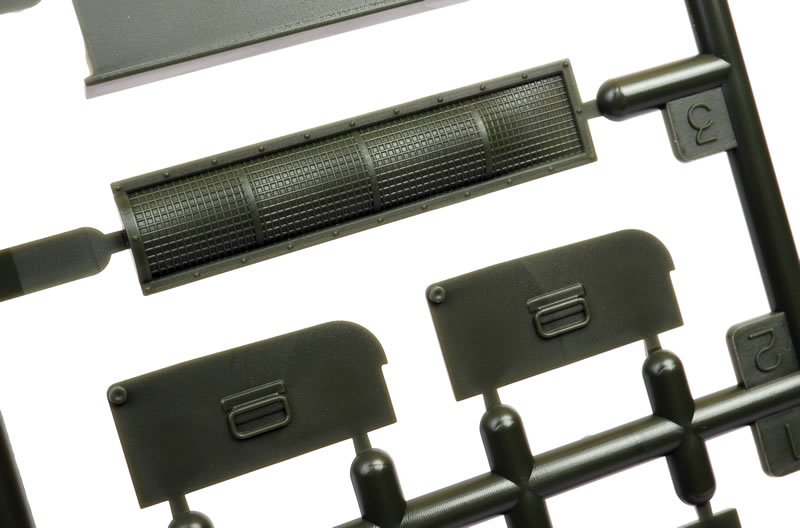
Construction now moves on to the running gear, which offers separate bump stoppers, swing arms and well detailed three-piece road wheels. The drive sprockets and idler wheels are secured using polythene caps, which will make fine-tuning the link and length tracks easier.
The link and length tracks are made up from a long top track run with sag moulded in place, a long flat bottom run, two short five-link runs to bridge the gaps between the bottom run and the drive sprocket and idler wheel, and 14 individual links on each side to wrap around the sprocket and idler. There are some faint ejector pin circles but they are on the inner surface and will be very difficult to pick out.
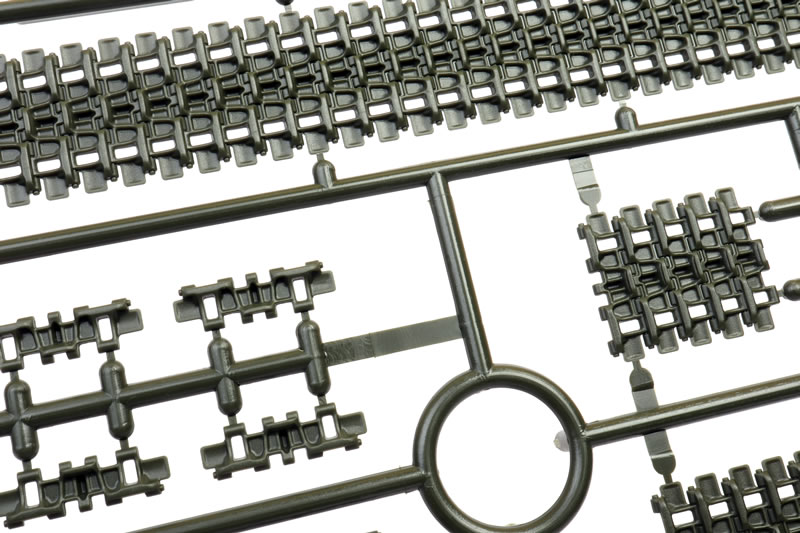
A nice drape is moulded into the lengths between the return rollers on the top run.
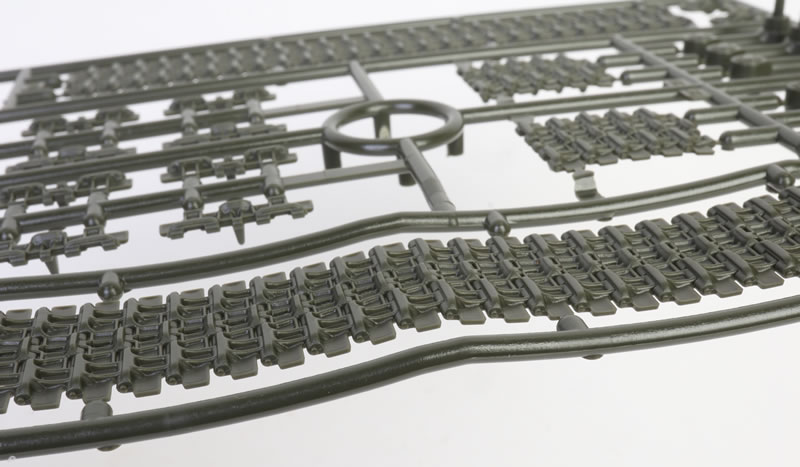
The stowage boxes are five pieces each and the lids may be posed open or closed.
The turret race features fine teeth and the mating circle on the bottom of the turret is made up from six separate pieces. You'll need to double check that these parts are properly seated or the turret won't rotate as intended.
The turret itself is broken down into separate sides, front, rear, base and roof. The rear turret machine gun is moveable after assembly (as is the hull machine gun), and the 152mm gun may elevate and depress thanks to the use of polythene caps. There is no breech or other interior detail.
The turret hatch may be posed open and a very nice seven-piece Commander full figure is included. Collar and sleeve insignia are offered on the decal sheet. Clear goggles are provided, although I don't think they will work over the typical Soviet tankers' helmets.

A partial driver figure is included too.

A clear part is also provided for the headlight lens.
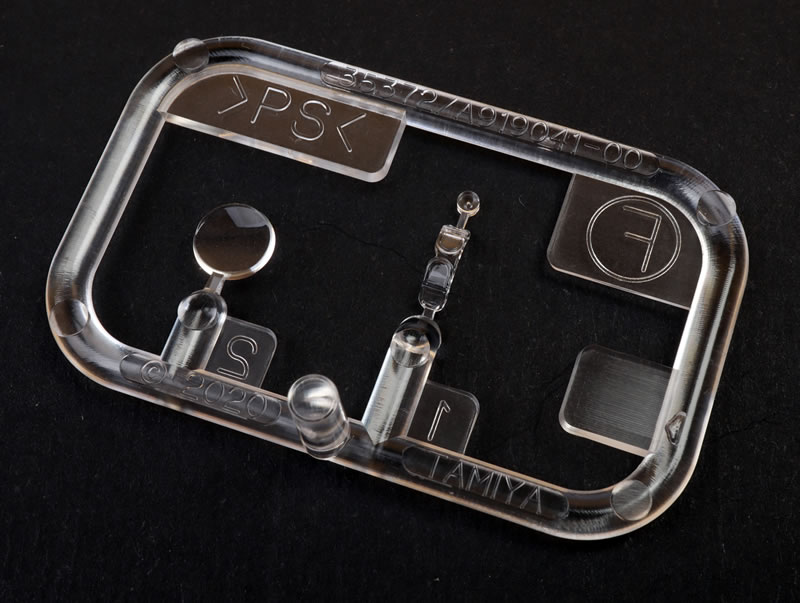
The only multimedia in the kit is a length of string for the tow cable.
One marking options are provided for a white washed Beutepanzer - a KV-2 captured and in use by the Wehrmacht..
Of course, you can just leve it as an unmarked, plain green Soviet example.
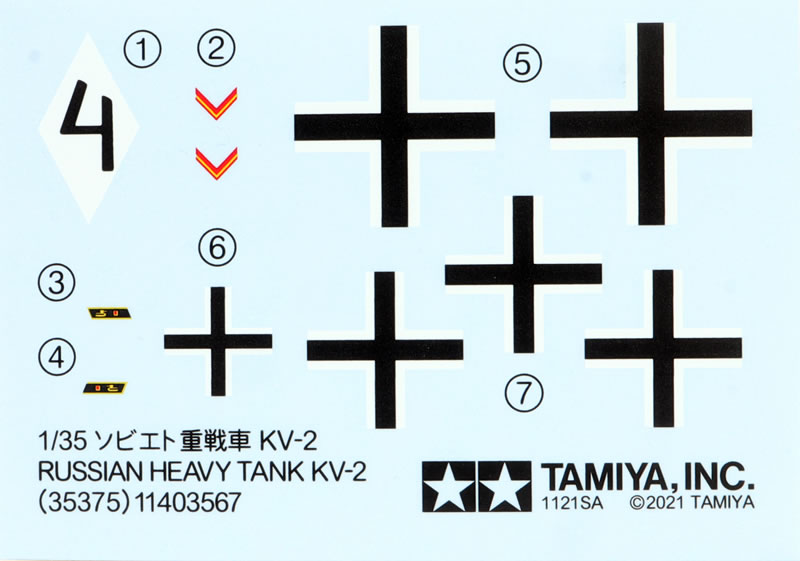
The instructions are well laid out over 23 steps with clear illustrations supplemented by text directions where required. The section dealing with the tracks is especially well done.
Conclusion
Once again, Tamiya has delivered a well-detailed and easy to build model of an iconic vehicle. This new model has nothing at all in common with their 1975 release.
Tamiya's 1/35 scale KV-2 features plenty of detail and the surface textures, especially the cast effect and torch cuts, are stunning.
This is a worthy and faithful replica of an important WWII Soviet tank.
* Historical summary courtesy of Wikipedia.
Purchased by the reviewer
Tamiya kits are distributed in the UK by The Hobby Company Limited




























